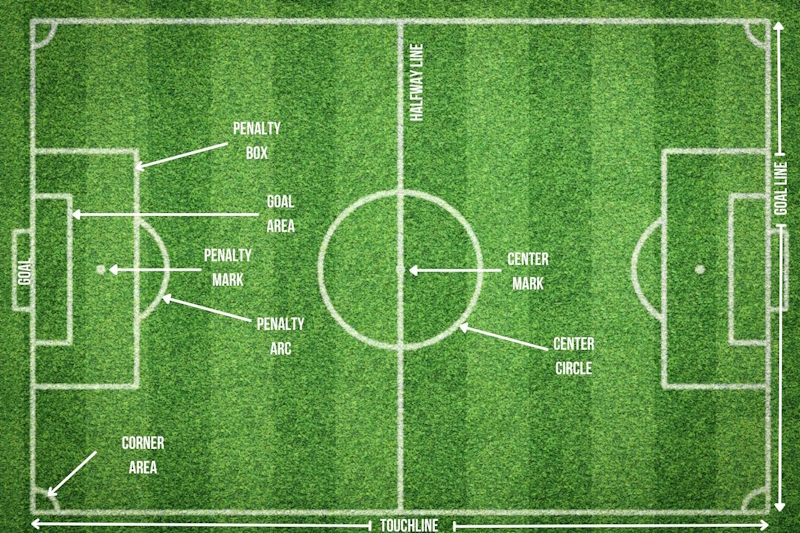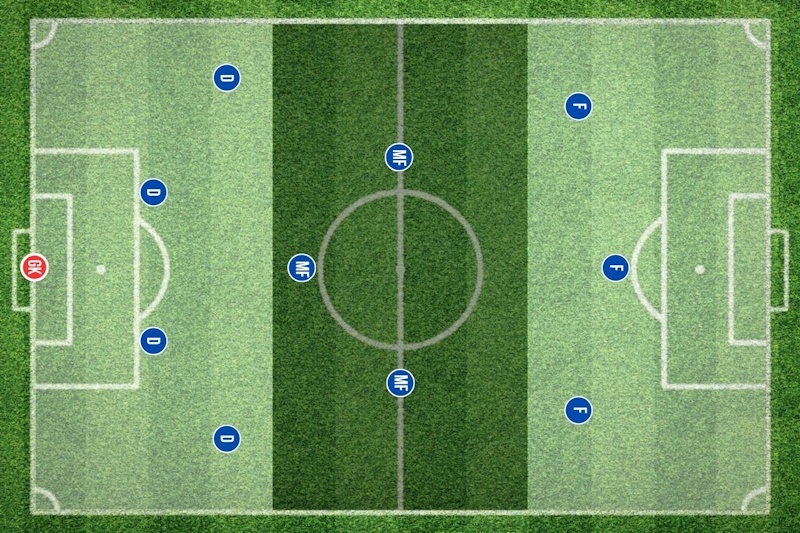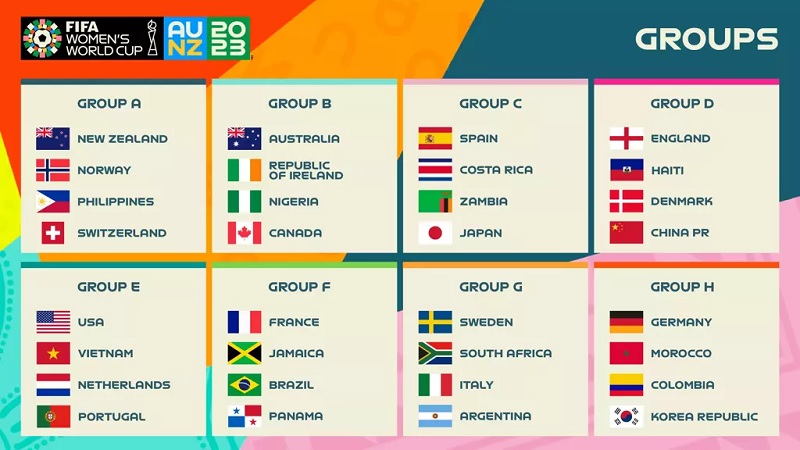Feature image photo by Luis Veniegra/SOPA Images/LightRocket via Getty Image
It’s official: The 2023 FIFA Women’s World Cup is here. FINALLY! Thirty-two nations — a record level of participation for the women’s tournament — will compete for the right to call themselves world champions.
It hasn’t been easy getting here.
Around the globe, soccer federations have been on some bullshit and inspired by the US Women’s National Team’s fight to achieve equal pay, players are standing up. Over the last year, we’ve seen persistent indifference in Jamaica, player revolts in Spain and France, a strike in Canada and a boycott in South Africa. The Japanese federation came thisclose to not having a broadcast partner for the World Cup. It’s been a mess.
And then, on top of that, there are the injuries…dear God, the injuries.
World Cup rosters have been decimated by a spate of knee injuries and ACL tears. England will be without Beth Mead, Leah Williamson, and Fran Kirby. France will be without Delphine Cascarino and Marie-Antoinette Katoto, the Netherlands won’t have Vivianne Miedema. Spain will be without Sheila García. Katie Rood is out for co-host nation, New Zealand, while Janine Beckie and Janine van Wyk are out for Canada and South Africa, respectively.
And for the US? No Christen Press. No Mallory Pugh Swanson. No Catarina Marcario. No Sam Mewis. No Becky Sauerbrunn.
(Sorry, that noise you just heard was me weeping in the corner. I’m cool now, I promise. But, seriously, Sarah Walsh is right: we need to invest in more research in ACL injuries in women’s soccer.)
Whatever hurdles these 32 nations have overcome to get to this point, this is it: they’re here, ready to test their meddle and compete against the world’s best. For their efforts, the players will be rewarded with $150 million in prize money, a 300% increase over 2019 but only about a third what the men got in the 2022 Men’s World Cup.
If you’re a newcomer to the beautiful game and want to do more than just thirst over the women on the pitch — no judgement! — this explainer is for you. It’s everything you need to know to enjoy the next month of World Cup action.
Is it Soccer or Football?
It’s both.
The contentious debate over whether to call the sport “soccer” or “football” has raged on forever. It’s been, mostly, framed as a disagreement between fans of the sport in the United Kingdom and the United States that obscures the fact that the word soccer is a UK export.
Back in 19th-century England, two versions of football were gaining popularity: one played with your hands, known as rugby football, the other played with your feet, known as association football. Prep school jocks nicknamed both sports, shortening rugby football to “rugger” and association football to “soccer.” The nickname flourished in countries like America and Australia where football was already its own thing but it also persisted in the UK until the 1970s. Apparently, Pelé — the greatest soccer play of all time — joining the New York Cosmos of the North American Soccer League was the final straw for UK football fans. After that, the term “soccer” fell out of favor within the UK and “football” became the preferred descriptor.
The Field of Play
The playing surface on which the game of soccer is played is typically referred to as the pitch. Back when the sport was still gaining popularity in England, it often shared grounds with cricket and cricketers call their field a pitch. Even as the sport developed its own following, the name stuck. The pitch can be made of grass, artificial turf or some combination of both. After protests (and a lawsuit) at the 2019 Women’s World Cup, this year’s World Cup will be played entirely on grass.

Believe it or not, the size of the pitch isn’t uniform across all arenas. For international play, FIFA (the soccer governing body) dictates that dimensions of the longer side — known as the touchline — be at least 110 yards or 120 yards at most. The shorter side of the pitch — known as the goal line — must be at least 70 yards or 80 yards at the most.
If, at some point during the match, the ball goes out over the touchline, the opponents of the player who last touched the ball gets a throw-in (Law 15). But if the ball crosses “over the goal line, on the ground or in the air, having last touched a player of the defending team, and a goal is not scored,” a corner kick is awarded (Law 17).
The field of play is divided into two halves by a halfway line and the center point of that line is where the action kicks off. But while the pitch is divided into halves, it’s often described in thirds: the defensive third, extending from the goal line for 40 yards into the pitch; the middle third, the next 40 yards, bisected by the halfway line; and the attacking third, the final 40 yards that leads to the opposition’s goal.
Goals are centered along the goal line, equidistance from each corner, and span eight yards across. The goal area surrounds the goal: six yards on either side of the goal and six yards deep into the pitch. It’s sometimes called the six-yard box and, most often, you’ll see that space used for goal kicks. Extending 18 yards on either side of the goal and 18 yards deep into the pitch is the penalty area or penalty box. If a player is fouled within that area or if a defender’s hand touches the ball, a penalty kick (or a PK) might be assessed. The penalty kick can be taken by any player on the pitch at the penalty mark, which is 12 yards from the goal line, directly in-line with the center of the goal.
While the player is completing the penalty kick, everyone else (aside from the opposing goalie, natch) has to stand 10 yards outside the penalty mark. The penalty arc — the semi-circle on top of the box — denotes that distance.
For more nerdy details about the pitch, check out FIFA’s Laws of the Game (Rule 1).
Get in Formation
This year, each of the World Cup’s 32 participating nations will bring 23 players to Australia and New Zealand. Of those, 11 players will be in the starting line-up (or Starting XI) and the remainder will be available as substitutes (assuming they aren’t injured). During a match, each team (or side) is afforded five subs and if a match goes to extra time, each team gets an additional sub.
A lot of autonomy is given to nations in forming their rosters (and their gameday line-ups) but in general, you can break the rosters down to four categories: goalkeepers, defenders, midfielders, and forwards. Within those four categories of players, there are some specific positions:
- Defenders: Left Back/Fullback, Center Backs, Right Back/Fullback, Wing-back Sweeper
- Midfielders: Wingers/Left Side or Right Side Midfielder, Central Midfielder, Defensive Midfielder, Attacking Central Midfielder
- Forwards: Center Forward, Strikers, Second Striker
There is a lot of variation among teams about positions, what they’re called, and which roles will be part of the Starting XI — according to the talent available and the needs of the team — so it’s not worth getting bogged down in the minutiae of it all. What’s most important to remember is the positioning of those ten players on the pitch or the formation.

An example of a 4-3-3 formation.
Formations in soccer vary widely but they are all read from back to front (defense to midfield to forward). So, for instance, when the US Women’s National Team takes the pitch for their opening match against Vietnam, they’ll likely line up in a 4-3-3 formation, which means they’ll have 4 defenders, 3 midfielders, and 3 forwards. Vietnam, on the other hand, is expected to counter the United States’ attack with a 5-4-1, a formation that features 5 defenders, 4 midfielders and 1 forward. Before every match, teams or in-game commentators will note the Starting XIs and team formations.
For more information about soccer formations that we might see during this World Cup, check out this soccer.com explainer.
How Does the World Cup Work?
As I noted, 32 nations will compete in this summer’s tournament…the most ever featured in a Women’s World Cup. The tournament will run from July 20 to August 20.
Host nations — Australia and New Zealand — are automatic qualifiers and 27 slots are doled out by soccer confederations (through their own tournaments). Haiti, Portugal, and Panama qualified for the World Cup through an inter-confederation play-off. Teams were put into pots and, in October, they were randomly drawn and slotted into their World Cup groups.

The first stage of the World Cup is Group Play. Each team plays the other three teams in their group. Games are 90 minutes (45 minute halves) plus time added on by the referee at the end of each half, to account for any stoppages in play (stoppage time). There is no overtime (or extra time) in group play and games can end in a tie. Wins earn a team three points, a tie earns a team one point and a team gets no points for a loss.
The two teams that earn the most points in group play get to advance to the knockout stage. In the event that two teams finish the group stage having amassed the same number of points, the standings will be determined by goal differential (the total number of goals scored minus the total number of goals conceded). The top finisher in the group faces the second place finisher in another group and vice versa.
From the knockout stage to the finals, games are 90 minutes (45 minute halves) plus stoppage time. If there’s no winner when the referee calls full time, the match goes into extra time. That additional period consists of two 15-minute halves plus stoppage time. If, at the end of extra time, the two teams are still tied, they move to a penalty shootout.
In a shootout, each team is given five PKs. The team with the most goals wins but, if the teams are still tied after five shots, they move to sudden death penalty kicks. Each side gets one kick until one team scores and the other misses.
Soccer Vocabulary
“The Beautiful Game:” A nickname for soccer. It’s origins are popularized by Pelé, one of the greatest players of all time.
Brace: When a player scores two goals in a single match.
Clean Sheet: No goals conceded; a shutout. A stat typically reserved for goalies.
Debutante: A team making their first appearance in the World Cup. The debutantes in this year’s World Cup include: Haiti, Morocco, Panama, Philippines, Portugal, the Republic of Ireland, Vietnam, and Zambia.
Direct Kick: A type of free kick that can be scored by kicking the ball directly into the goal.
If a team commits an offence normally punished by a direct free kick in its own penalty box, a penalty kick is awarded instead.
Equalizer: A goal that ties the score of a game.
Golden Boot: Award given to the top goal-scorer of the tournament; Megan Rapinoe (USA) was the 2019 World Cup Golden Boot winner.
Golden Glove: Award given to the best goalie of the tournament, usually the goalie with the most clean sheets; Sari van Veenendaal (NED) was the 2019 World Cup Golden Glove winner.
Handball: A foul by a player who touches the ball with their arm or hand, extended in an unnatural position. Usually results in a direct kick but if a handball occurs in the penalty box, a penalty kick is awarded.
Hat-Trick: When a player scores three goals in a single match.
Indirect Kick: A type of free kick that must be touched by another player before it can go into the goal.
Nutmeg: When a player kicks the ball through the legs of an opposition defender, usually while dribbling. Tobin Heath is a master at the nutmeg.
Offsides: The most misunderstood rule in soccer, by fans and referees alike. Created to prevent attacking players from just camping out in front of the opposition’s goal, a player is offside if any part of their body “is nearer to the opponents’ goal line than both the ball and the second-last opponent” (Law 11). HOWEVER, a player can be offside and not be guilty of an infraction as long as they are not involved in the active play.
When called during the run of play, the opposing team gets an indirect free kick from where the infraction occurred.
Olimpico: A goal scored from a corner kick. Megan Rapinoe is the queen of the olimpico.
Own goal: A goal accidentally scored by a player into his own net, counts as a goal for the opposition.
Set Piece: The result of a free kick, corner, throw-in, or goal kick. Unlike the rest of the match, set pieces can be practiced, like plays in American football or basketball.
VAR: Stands for Video Assistant Referee; From the FIFA Rulebook (Law 6):
“a match official who may assist the referee to make a decision using replay footage only for a ‘clear and obvious error’ or ‘serious missed incident’ relating to a goal/no goal, penalty/no penalty, direct red card (not a second caution) or a case of mistaken identity when the referee cautions or sends off the wrong player of the offending team.”
For the first time in a senior tournament, VAR decisions will be announced by the referees after determining the outcome, much like is done in American football.
Which FIFA Women's World Cup team has your favorite nickname? 🔥👇 pic.twitter.com/Xa71qL2Zws
— FOX Soccer (@FOXSoccer) July 19, 2023
Who Should I Follow for More Women’s World Cup Content Online?
I love soccer but, admittedly, I don’t know as much about the game as I do basketball — a consequence of growing up on Tobacco Road, I suppose — so I’m constantly on the hunt for opportunities to learn more. Here are a few resources I’d recommend:
- The Athletic: For my money, the coverage that Meg Linehan and Steph Yang consistently do covering women’s soccer is worth the price of an Athletic subscription. Kim McCauley and Katie Whyatt are great additions to the site’s World Cup coverage and we’ll get expert commentary from Vivianne Miedema, Sam Mewis, and Fern Whelan.
- Attacking Third: A must-listen soccer podcast from Sandra Herrera and Lisa Roman Carlin. The podcast has been so successful that CBS Sports has made it into a triweekly show on the Golazo Network.
- Diaspora United: A podcast, hosted by André Carlisle and Courtney Stith, that centers black and brown players that often get overlooked (and/or disrespected) by sports media. Unapologetic Crystal Dunn truthers.
- Gal Pal Sports: Started in the aftermath of the 2019 World Cup, Lesley Ryder and Emily Anderson “to make sports fun, make fun of sports, and do some good along the way.”
- The RE-CAP Show: No one knows better what it takes to be a World Cup champion than 2x winners, Tobin Heath and Christen Press. Will I watch this show regularly? Definitely. Will it be coupled with a healthy dose of melancholy that Press can’t be out there on the pitch? Absolutely.
- Shea Butter FC: Hosted by Skye and Sylvs, Shea Butter FC is a podcast by, for, and about Black women in soccer. Along with Diaspora United and Gal Pal Sports, SBFC will be on the ground at the World Cup thanks to the support of the soccer community.
Feel free to drop any other must follows for the World Cup in the comments!
All psyched and ready for the World Cup now? Keep the schedule handy and, depending on where you live, a pot of coffee at the ready.
To borrow a phrase from the USWNT, “let’s fuckin’ go!”



Just Women’s Sports is another great source of World Cup new and any women’s sports news. Kelley O’Hara has been interviewing fellow players on their YouTube page.
Great recommendation, Anne. JWS also has a World Cup show with Katie Nolan and Midge Purce.
Also, Counter pressed is a great podcast! Also very gay! 😀 ⚽️
This is such a helpful and welcoming article, and even I, a gay who knows a fair amount about soccer/football, got to learn about some podcasts I should have been listening to a long time ago! Thank you!
Omg!! This post is worth my entire A+ subscription for the whole year. I legit got in a fight with my partner yesterday because I am a newbie and she’s not and she couldn’t explain all these elements to me in a way I could understand and I got frustrated. WOW thank you!
Thanks so much for all this info! This is the first world cup I can watch at a reasonable time as it’s played at home in Australia! And now I know what’s happening. Thanks everyone for coming down!
Chookas Darlings! But
Go Matildas 🌻
Great article with lots of good info even for those of us who are veteran Women’s World Cup fans. Thank you. How could you leave Tobin Heath off the list of players we are missing due to injuries!? Please add her rightfully to the list. She is my favorite player—partners with Press and the World Cup just isn’t the same without her. I am sure it was some strange oversight but she is key, queer and missed.